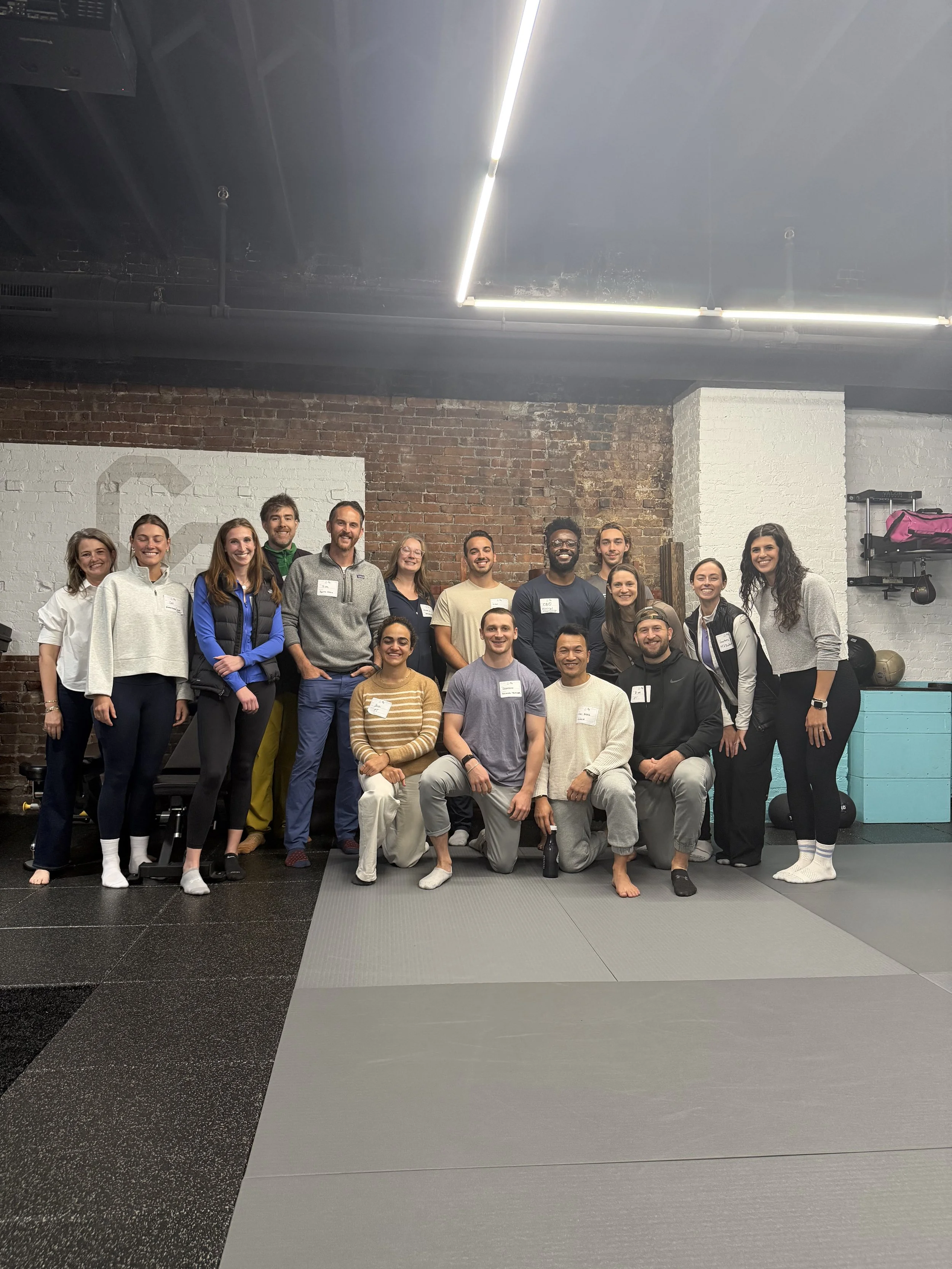Resilient Aging - Health and Fitness Roundtable
At our recent Resilient Aging Roundtable hosted by our friends at Clientel3, professionals from across disciplines — chiropractors, physical therapists, trainers, nutritionists, and physicians — came together to discuss one big question: How do we help older adults stay strong, mobile, and independent for life?
A few of the awesome health and fitness pros that came out for our event. We love it when chiros, PTs, trainers, educators (and more) get together to solve problems.
The Age Wave Is Here
America is getting older. The median age has risen from 30 to nearly 39 in just three decades. By 2030, one in five Americans will be over 65. That’s not a crisis — it’s an opportunity.
Movement is one of the most powerful tools we have to support healthy, resilient aging, but we’re still not getting enough of it. According to the Physical Activity Guidelines for Americans (2nd edition), we should aim for:
150–300 minutes per week of moderate aerobic activity or 75–150 minutes of vigorous activity
Strength training at least 2 days per week
Balance or functional movement 3 days per week if at risk for falls
(U.S. Department of Health & Human Services, 2018)
Yet only 1 in 7 older adults meet both aerobic and strength guidelines.
Why It Matters
Movement isn’t just about muscle. Staying active reduces fall risk, supports independence, and helps prevent chronic disease. It improves cognition, mood, and bone health and enhances our opportunities for social connection.
As one participant put it:
“We all want to be active older adults. Movement is what gives life texture, independence, and dignity.”
On a broader level, helping older adults stay active reduces healthcare costs, supports caregivers, and strengthens communities. Keeping people moving isn’t just a personal win — it’s a public health strategy.
Rethinking the “Fragile” Narrative
Too often, aging is framed as decline. That type of fear-focused language often backfires. Instead of warning people not to fall, we can say, “Let’s help you stay strong on your feet.”
Even the words we use to describe older adults matters - instead of say “an arthritic elderly person,” try “an older adult living with arthritis.”
Research shows that positive, empowering language improves participation and confidence in older adults (Brett et al., 2019, Age and Ageing).
Strength, Balance, and the Fear Factor
Strength declines roughly twice as fast as aerobic capacity after age 50 - but the good news is that it’s reversible at any age. People in their 70s and 80s can gain muscle and strength at rates similar to younger adults.
Falls remain a serious issue:
1 in 4 older adults fall each year
Falls cause 41,000 preventable deaths annually in the U.S.
Balance + strength + functional training three times per week reduces fall risk (World Health Organization, 2020)
Simple screens like the 10-second single-leg stance, Timed Up and Go, or 30-second chair stand can give quick insights into balance and mobility — and help track progress over time.
The Power of Community
Consistency beats perfection. Whether it’s walking groups, community fitness classes, or even pickleball, social connection is often what keeps people coming back.
Programs that foster belonging, celebrate progress, and make older adults feel seen tend to thrive long-term and build healthier communities in the process.
Why Policy Matters
Unfortunately, recent federal budget proposals have threatened funding for the Prevention and Public Health Fund, falls-prevention grants, and Older Americans Act programs. Cuts to transportation and public infrastructure can also make it harder for older adults to access safe sidewalks, parks, or fitness opportunities.
Movement access is a public health issue, and as professionals, we can advocate for programs that keep older adults active, regardless of funding shifts.
Final Thoughts
Resilient aging isn’t about avoiding risk - it’s about embracing our adaptability. When older adults move with confidence, we all benefit: families, communities, and the healthcare system alike.
So whether you’re a professional working with older adults or simply thinking about your own future, start now. Move often. Stay strong. Build resilience that lasts.

